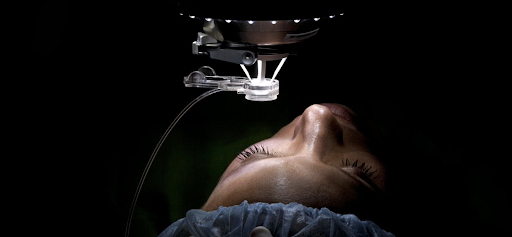
Lasik stands for Laser-Assisted in Situ Keratomileusis. It is a method that changes the shape of the cornea permanently using an excimer laser. This surgery aims to reduce your dependency on spectacles or lenses. Undergoing this surgery ensures that now you are completely free from eye issues as it is the permanent correction of refractive errors. It involves creating a delicate flap of the cornea and the top layer of the eyes. It is one of the safest and most commonly achieved methods across the country. More than 30 million eyes are free from the bonds of corrective glasses or lenses.
Who can undergo this surgery?
Well, anyone can undergo this surgery following the conditions. These conditions are:-
-
The person’s age must be above 18.
-
The person has a healthy retina.
-
Has spherical powers or stable cylindrical.
-
The person must have a strong motivation to get free of lenses.
What to expect before surgery?
If you have made up your mind about the surgery, you will need an initial consultation with an eye specialist to know if you are eligible for the surgery. If you wear soft contact lenses, then you should stop wearing them before 2 weeks of your baseline evaluation and switch to your glasses for full time. If you are using a toric lens then 3 weeks and for hard lenses, this duration is of 4 weeks before evaluation. You should inform the doctor about past and present eye conditions, also the medicines and allergies to your eyes. The doctor will be discussing all the details, what to expect, risks and benefits, and responsibilities after surgery. Don’t feel nervous with the doctor take your time to discuss all the aspects. Stop using all the beauty and eye makeup products a day before surgery as it may increase the risk of eye infection. Arrange for transportation during and after the surgery as you will not be allowed to drive.
What to expect during surgery?
The surgery takes less than 30 minutes. Your treatment will be done in an exam room that has a laser system. It includes large machines with a microscope and a computer screen in them. A numbing drop will be put on your eyes to clean areas around your eyes. To hold your eyelids open an instrument called a lid speculum is used. If a mechanical microkeratome is used a ring will be placed on your eyes and high pressure is applied to create suction in the cornea. You might feel some discomfort during this procedure but try to be calm as possible. After cutting the flap, the ring and microkeratome are removed.
The doctor may use a laser keratome instead of a mechanical microkeratome to cut a flap in the cornea. If laser keratome is used, the cornea of your eyes will be flattened by a clear plastic plate. There are chances that your vision will dim and you feel discomfort during the procedure. The laser energy is immersed inside the tissues of the cornea which creates thousands of small bubbles of gas and water. It expands and connects to separate the tissues underneath the surface of the cornea, creating a flap. The plate is removed after the procedure.
You will be able to see but with fluctuating degrees of clouded vision during the remaining part of the procedure. The doctor lifts the flap and tucks it back on its hinge. This will dry the exposed tissues. You will be asked to stare at the light of a laser positioned over your eyes. This light is going to help you in fixing your eyes on one spot. If you are unable to stare at a fixed object for 60 seconds, then you might not be a good candidate for this surgery.
After all the tests and pre-procedures are done, the doctor checks if your eyes are in their correct position or not. If found in the correct position, the doctor starts the laser surgery. The pulse of the laser has a ticking sound in them. When corneal tissues are removed by a laser, some people have reported a smell similar to the burning of hair. The amount of laser energy delivered to your eyes is controlled by a computer. Before the start of lasik surgery, the doctor had programmed the computer to vaporize tissue based on the initial evaluation of your eyes. After the laser energy vapourises the corneal tissues, the flap is put back into its original position. At the end of the procedure, a shield is placed on your eyes as protection. It prevents you from rubbing and touching your eyes. It also protects eyes from accidental hit or poking until the flap is healed completely.
What to expect after surgery?
There are chances that your eyes might itch or burn after the procedure. There are some cases of mild pain after surgery, the doctor recommends pain relievers in those cases. Your eyes might get tears or water in them. These are very obvious after Iasik but things get normal soon. You will want to rub your eyes, but don’t do it. The white portion of the eyes may turn red. You can also experience glow, haloes around light, and sensitivity to light. These symptoms start reducing on the second day after surgery. Also, you should take off from your work so that your eyes can get enough time to rest. If your symptoms get worse or you feel pain, then immediately call your doctor instead of a scheduled visit. You must visit your doctor after 24 to 48 hrs of surgery and at regular intervals as prescribed by the doctor. Do not resume wearing contact lenses on your eyes after surgery, even if your vision is blurry. Consult your doctor before wearing any lenses or glasses on your eyes. You should wait for at least 2 weeks or until your doctor advises before using makeup, cream, lotions, etc around your eyes. You should scrub your eyelashes for a period as suggested after surgery. It can even take 3 to 6 months to stabilize your vision. If you feel any new or unusual symptoms after surgery feels free to contact your doctor immediately, if not cured at the time can even result in loss of vision.


